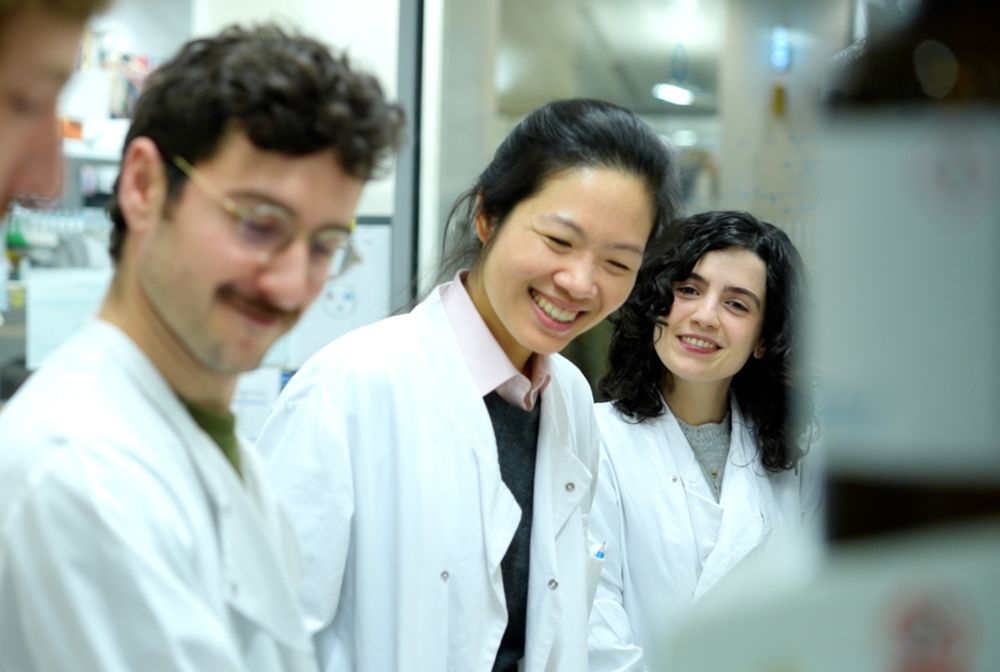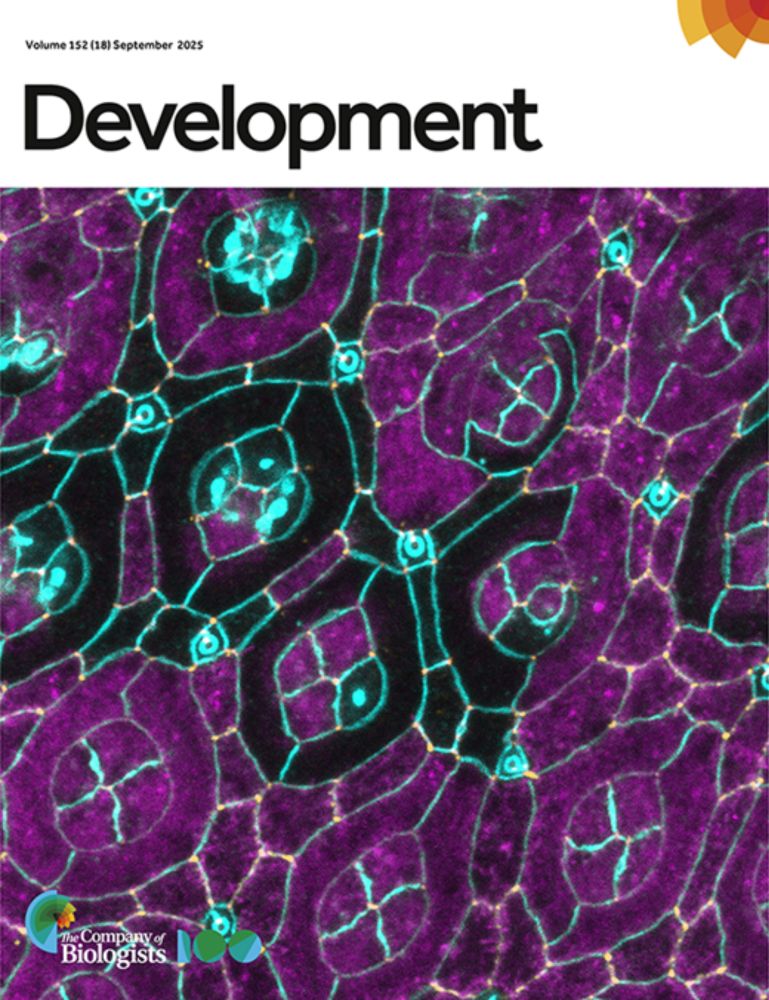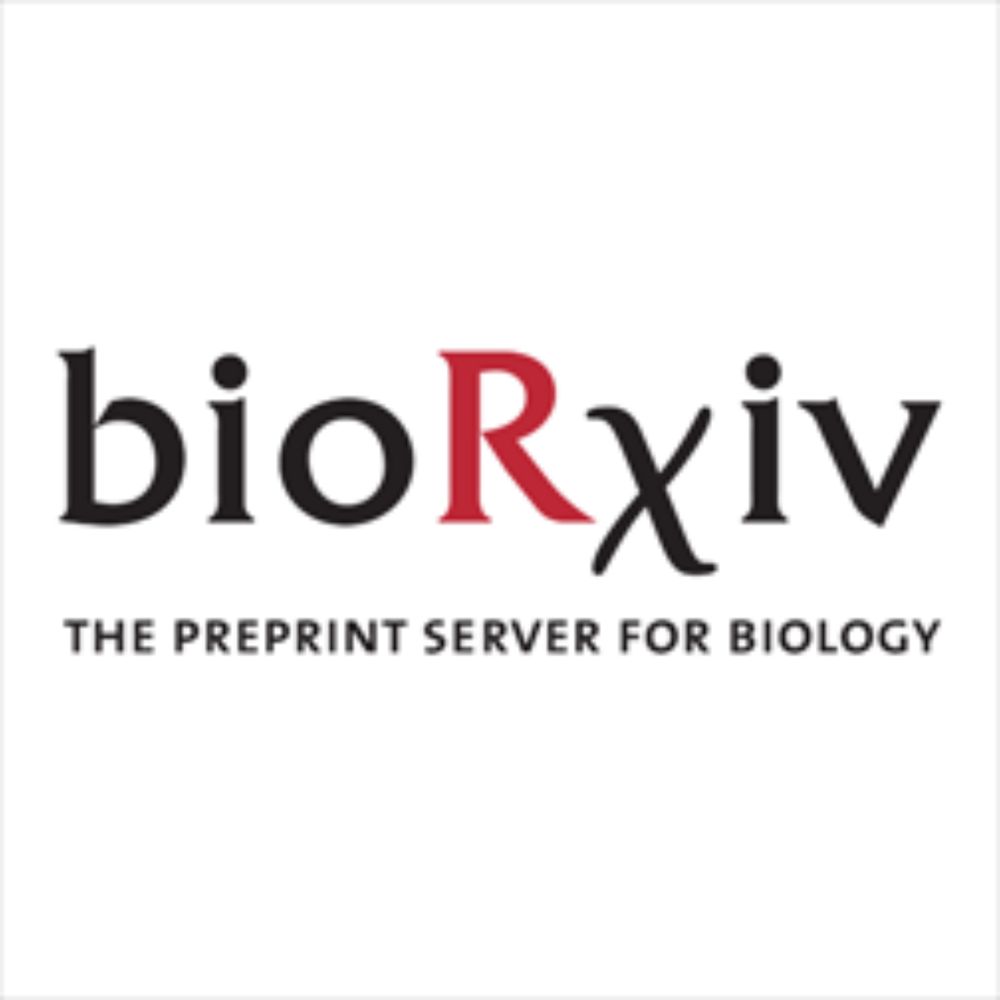
We are recuiting two new Associate Professors here in Oxford Biochemistry. Come join us! Reach out to me if you have any questions. Please repost! tinyurl.com/mr3m7bd3
17.10.2025 14:56 — 👍 76 🔁 98 💬 0 📌 1
Out now! 🎉 Check the thread & preprint to see why we think E–P specificity is real in mammals — and, well, a few other interesting things popped up too 👀
Huge thanks to @danielibrahim.bsky.social, @arnaudkr.bsky.social & @stemundi.bsky.social and fantastic people in their labs — what a journey! 🧪🔬
17.10.2025 05:50 — 👍 42 🔁 13 💬 1 📌 0

Did transposable elements shape brain evolution — and if so, which ones, and in which cell states and lineages? Led by @tyamadat.bsky.social, we explored this question in cerebellum development using sequence-based deep learning models!
www.biorxiv.org/content/10.1...
16.10.2025 22:01 — 👍 70 🔁 30 💬 5 📌 1

Following the announcement of YourParty, support for 'Others' in opinion polls increased from 3.7% to 6.0%. It has since dropped back to 3.7%, with the Greens seemingly gaining, reaching a peak of 10.7%.
electionmaps.uk/polling/vi
15.10.2025 10:21 — 👍 80 🔁 12 💬 7 📌 5
DNA methylation is one of the most studied epigenetic modification associated with regulation of gene expression. Bisulfite-converted genomic DNA sequencing has been the current gold standard in the field for building genome-wide DNAm maps at base pair resolution.
14.10.2025 08:21 — 👍 10 🔁 6 💬 1 📌 0
I have indeed been skipping all the major epigenetics/chromatin meetins in the past few years for this reason
11.10.2025 19:42 — 👍 3 🔁 1 💬 0 📌 0
Our Department @imperialcollegeldn.bsky.social just received 546 applications for 3 Assistant/Associate Professor positions. Curious to see how many of these are American scientists trying to relocate
11.10.2025 18:05 — 👍 9 🔁 4 💬 0 📌 0

Early career group leaders
We appoint researchers from across biology and biomedicine to set up their first groups at the Crick.
The @crick.ac.uk is recruiting Early Career Group Leaders
- Lab set-up, research costs, salaries for up to 5 researchers
- Support for up to 12 years
- Access to our core facilities
- Competitive salary
- Fantastic colleagues
- All areas of biology
Deadline 27 Nov
www.crick.ac.uk/careers-stud...
10.10.2025 08:20 — 👍 146 🔁 150 💬 2 📌 2

Hominoid-specific retrotransposons fuel regulatory novelty in early brain development , by @retrogenomics.bsky.social.
➡️ www.cell.com/cell-genomic...
10.10.2025 12:57 — 👍 15 🔁 10 💬 1 📌 1
It might be hard to convey to people outside economics just how seismic this is. The Trump effect has most certainly arrived to US academia.
10.10.2025 12:23 — 👍 454 🔁 136 💬 9 📌 10
That's right, folk! THREE TENURE TRACK JOBS IN BIOLOGY AT UMASS BOSTON! You might even be a good fit for more than one! Check 'em out! We'd love to have you!
07.10.2025 14:01 — 👍 10 🔁 11 💬 1 📌 1

Image shows the first two printed pages of the paper “A forkhead-domain gene is mutated in a severe speech and language disorder” by Cecilia Lai and colleagues, published in Nature in 2001 (volume 413, pages 519-523). The abstract reads as follows:
Individuals affected with developmental disorders of speech and language have substantial difficulty acquiring expressive and/or receptive language in the absence of any profound sensory or neurological impairment and despite adequate intelligence and opportunity. Although studies of twins consistently indicate that a significant genetic component is involved, most families segregating speech and language deficits show complex patterns of inheritance, and a gene that predisposes individuals to such disorders has not been identified. We have studied a unique three-generation pedigree, KE, in which a severe speech and language disorder is transmitted as an autosomal-dominant monogenic trait. Our previous work mapped the locus responsible, SPCH1, to a 5.6-cM interval of region 7q31 on chromosome 7. We also identified an unrelated individual, CS, in whom speech and language impairment is associated with a chromosomal translocation involving the SPCH1 interval. Here we show that the gene FOXP2, which encodes a putative transcription factor containing a polyglutamine tract and a forkhead DNA-binding domain, is directly disrupted by the translocation breakpoint in CS. In addition, we identify a point mutation in affected members of the KE family that alters an invariant amino-acid residue in the forkhead domain. Our findings suggest that FOXP2 is involved in the developmental process that culminates in speech and language.
Twenty-four years ago today, our paper “A forkhead-domain gene is mutated in a severe speech and language disorder” was published: www.nature.com/articles/350....
A personal thread about the ups & downs of the journey we took to get to that point....1/n
🗣️🧬🧪
04.10.2025 13:32 — 👍 84 🔁 34 💬 4 📌 6
Many congratulations Raquel, happy to see this published (and so well!)!
03.10.2025 12:04 — 👍 1 🔁 0 💬 1 📌 0

A human-specific regulatory mechanism revealed in a pre-implantation model
Nature - Genetic manipulation of blastoids reveals the role of recently emerged transposable elements and genes in human development.
Today in @nature.com, we present our work leveraging functional genomics and human blastoids to uncover a human-specific mechanism in preimplantation development driven by the endogenous retrovirus HERVK.
Special thanks to the reviewers whose comments improved our manuscript a lot! rdcu.be/eI3tD
01.10.2025 18:08 — 👍 132 🔁 50 💬 11 📌 5

Huntington's disease successfully treated for first time
One of the most devastating diseases finally has a treatment that can slow its progression and transform lives, tearful doctors tell BBC.
This is very exciting! A small clinical trial using gene therapy for Huntington's disease has been successful. microRNAs were used to edit the Huntington mRNA, stopping it making mutant protein that can damage neurons. Huge hopes now for treating such a devastating condition
24.09.2025 12:47 — 👍 351 🔁 113 💬 10 📌 25
Our study on the role of LTR5HS and SVAs in regulation of human neural crest migration is now published as peer-reviewed paper on @molsystbiol.org!
Congrats to first author brilliant postdoc Laura Deelen, and all the authors involved! @imperialsci.bsky.social
www.embopress.org/doi/full/10....
22.09.2025 11:24 — 👍 35 🔁 12 💬 1 📌 0
Thank you Geoff!
22.09.2025 13:28 — 👍 0 🔁 0 💬 0 📌 0
Our study on the role of LTR5HS and SVAs in regulation of human neural crest migration is now published as peer-reviewed paper on @molsystbiol.org!
Congrats to first author brilliant postdoc Laura Deelen, and all the authors involved! @imperialsci.bsky.social
www.embopress.org/doi/full/10....
22.09.2025 11:24 — 👍 35 🔁 12 💬 1 📌 0
WDR5 and Myc Cooperate to Regulate Formation of Neural Crest Stem Cells https://www.biorxiv.org/content/10.1101/2025.09.19.677424v1
20.09.2025 08:30 — 👍 0 🔁 3 💬 0 📌 1
Any academic folks on H1B visas (even with stamps in passports) please get legal advice from your University attorneys before leaving the US.
20.09.2025 04:09 — 👍 287 🔁 135 💬 8 📌 4

Schematic overview of our project. Dissection of Xenopus neural crest following morpholino knockdown of miRNA, then extraction of RNA for RNA-seq
Our new paper is out in Dev Biol! 🎉 🐸🧬
We show #miR-196a directs #neural crest fate in #Xenopus by repressing immature neural #ectoderm — evidence #miRNAs can potentially drive, not just fine-tune, early patterning
👉 Read more here: doi.org/10.1016/j.yd...
@devbiol.bsky.social @biouea.bsky.social
16.09.2025 09:16 — 👍 49 🔁 12 💬 1 📌 0

Top left: Immunofluorescence images of anti-GFP (green) and anti-ATRX (red) counterstained with DAPI (blue) illustrating absence of ATRX in Sun1GFP+ microglia nuclei in 2-month-old ATRX miKO mice. Scale bar, 50 µm. Bottom left: Representative images of microglia tracings; Sholl analysis reveals excessive branching in ATRX miKO compared to control microglia. Right: Immunofluorescence staining of CD68 (green) and Ai14+ (red) cortical and hippocampal CA1 microglia. Scale bar, 50 µm.
What's the role of microglial chromatin-mediated processes? This study shows that loss of ATRX in #microglia disrupts #chromatin structure, leading to de-repression of #retroelements & a viral mimicry #inflammation response that impairs hippocampal neuron function @plosbiology.org 🧪 plos.io/46cBaE4
15.09.2025 17:14 — 👍 7 🔁 3 💬 0 📌 0
Group Leader @mpi-bio-fml.bsky.social/Branco Weiss Fellow. Studying how to regrow limbs! Alum: @EPFL ELISIR / @Cambridge_Uni @GurdonInstitute
EN/TR
The Max Planck Institute for Molecular Genetics in Berlin. We want to understand how the genome works and how it is regulated, especially during embryonic development & disease. Imprint: https://www.molgen.mpg.de/impressum
Nucleic Acids Research (NAR), from Oxford University Press, publishes the results of leading-edge research into physical, chemical, biochemical and biological aspects of nucleic acids and proteins involved in nucleic acid metabolism and/or interactions
The Nogales Lab @ UC Berkeley. #CryoEM #Transcription #Microtubules #ChromatinModification Bluesky account managed by lab members.
Incoming Assistant Professor, Columbia University | @DamonRunyon.org Postdoc, UC Berkeley | PhD Princeton University | Mobile elements, Structural biology and Genome engineering | http://thawanilab.org
Cell cycle / Developmental timing / polyploidy
Favorite model: C. elegans
Group leader @hubrechtinstitute.bsky.social
Same content, different website! Human evolutionary genomics, functional genomics and archaic hominins. Group leader in Human Genomics at SVI in Melbourne/Naarm, Australia. Durian evangelist. Sometimes I go to Estonia.
Assistant Prof @univmiami.bsky.social. Cellular and Developmental Biology / Evo-Devo / Animal Multicellularity / Cell adhesion. Lover of weird invertebrates. Learn more: clarkelab.com
Philly sports, Mass Spec(Proteomics), survivor of riding Septa daily and father of 2 pretty cool kids.
Evolutionary and molecular biology seasoned with ecology
https://www.yehumoran.com/
Using mostly sea anemones and other cnidarians as my experimental model organisms. University Professor at HUJI and academic editor for EMBO Press. Opinions are my own.
Aussie prof studying craniofacial conditions (cleft lip/palate, craniofacial microsomia). Genomics, mouse models, dev/cell biol.
PhD student @crg.eu Interested in #bioinformatics #genomics #generegulation #transposons #evolution #popgen
Neuroscientist, Sestan Lab @yaleneuro.bsky.social, Brain Development and Evolution, Human-Specific Features, #Cerebellum, Pluripotent Stem Cells, #iPSC, Individual Variation
Postdoc @ Garvan Institute | Epigenetics, development, evolution
Former PhD student @crougeulle.bsky.social // postdoc @trono-lab.bsky.social in EPFL🇨🇭// interested in the evolution of cis-regulatory networks, vertebrate transposons 🤘 and 🦀
About TEs, IFN, senescence with a zest of ML
🇫🇷 Parisian gravitating in the Pacific Northwest 🇺🇲
-> Seattlelite🗼🛸👾
Profesor en Universitat Jaume I @uji.es | cazador de ARNs no codificantes en Genyo | en Naukas @naukas.bsky.social y HdCiencia @hablandodeciencia.bsky.social | autor de GENES (https://almuzaralibros.com/fichalibro.php?libro=5709). Me da pereza debatir.
Neuroscience/Stem Cell PhD student 🧠 👩🏽🔬 @grocottlab.bsky.social
@uniofeastanglia.bsky.social
Virtual Events Officer @womeninneurouk.bsky.social
Alumni @blizardinstitute.bsky.social @uniofnottingham.bsky.social
Graduate student using human-chimp cell fusions to study the genetic changes underlying uniquely human brain and cardiovascular phenotypes
Vertebrate limb development and evolution at the University of Sheffield
https://towerslab.weebly.com/
















